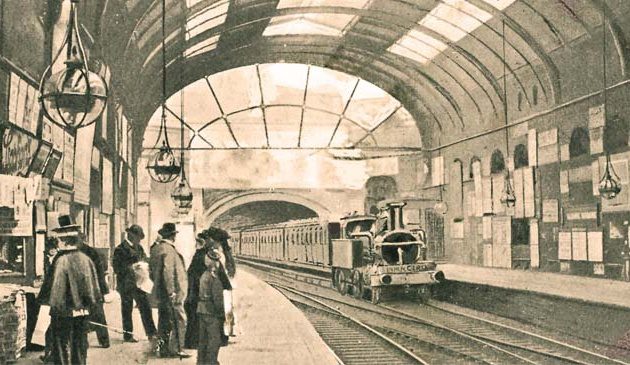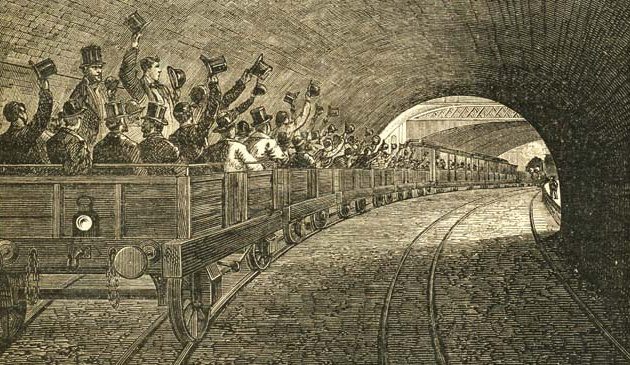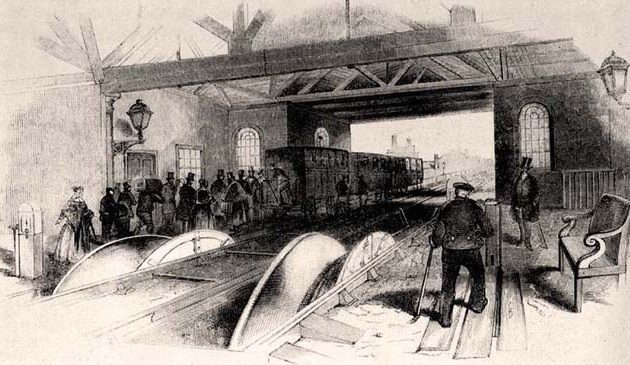The Regent’s Canal

A horse-drawn narrowboat owned by the Pickford company passes under Macclesfield Bridge, named after the Earl of Macclesfield, then Chairman of the Regent’s Canal Company. The bridge carries the northern entrance to Regent’s Park over the waterway. In 1874 it was demolished by an explosion and rebuilt, gaining its common name of ‘Blow-Up Bridge’.
The canal was busy with waterborne traffic from its first year of operation, with barges carrying a wide variety of goods including bricks and tiles, lime, limestone, metals, timber, coal, and manure, as well as hay and vegetables for the markets at the end of the Cumberland Arm.
In the early days of the canals, barges were pulled by horses that walked along the path at the side of the canal. The two tunnels at Maida Vale and Islington were cut without a towing path so boats had to be ‘legged’ through; a method where two bargees lie on their backs, each on a board fixed to the side of the boat, walking along the wall of the tunnel to propel the boat forward. It is a slow process and caused bottlenecks, especially at the lengthy Islington tunnel. In 1826 a chain-powered tug was introduced that could pull up to four barges at a time.
A contemporary account in Gentleman’s Magazine estimated the annual income of the canal as £60,000 and the maintenance costs at £10,000, leaving £50,000 for dividends and interest payments. However, the Regent’s was one of the last to be opened during the great age of English canal building, and its golden period was short-lived.
In 1837 Robert Stephenson’s London & Birmingham Railway opened, following the route of the Grand Junction from the Midlands, passing over the Regent’s Canal at Camden on its way into Euston. The London & York Railway arrived in 1852, eventually passing under the canal by tunnel on its last stretch into Kings Cross, and in 1868 the Midland Railway passed over it into St. Pancras Station. The railways were much faster and more efficient and soon began taking long-distance freight traffic away from the canals, although the canals gained some additional business in the carrying of coal, often used to power the steam trains. Perhaps the biggest nail in the coffin of the Regent’s Canal was the opening of the North London Railway in 1850 from the goods yards at Camden to Bow. It allowed goods to pass speedily from the Midlands to the London docks, avoiding altogether the much slower Grand Junction and Regent’s canals.
In 1845 there was a plan to fill-in the canal and build a railway over it, but that eventually came to nothing and the canal remains today much as it was in the 19th century, except for the filling-in of the Cumberland Arm. The carrying of freight ended during the 1970s, but the waterway is these days used by pleasure and trip boats and much of it, especially through Regent’s Park, is an extremely scenic walk.
Sources include: Michael Essex-Lopresti ‘Exploring the Regent’s Canal’.
< Go back to The Age of Improvement


